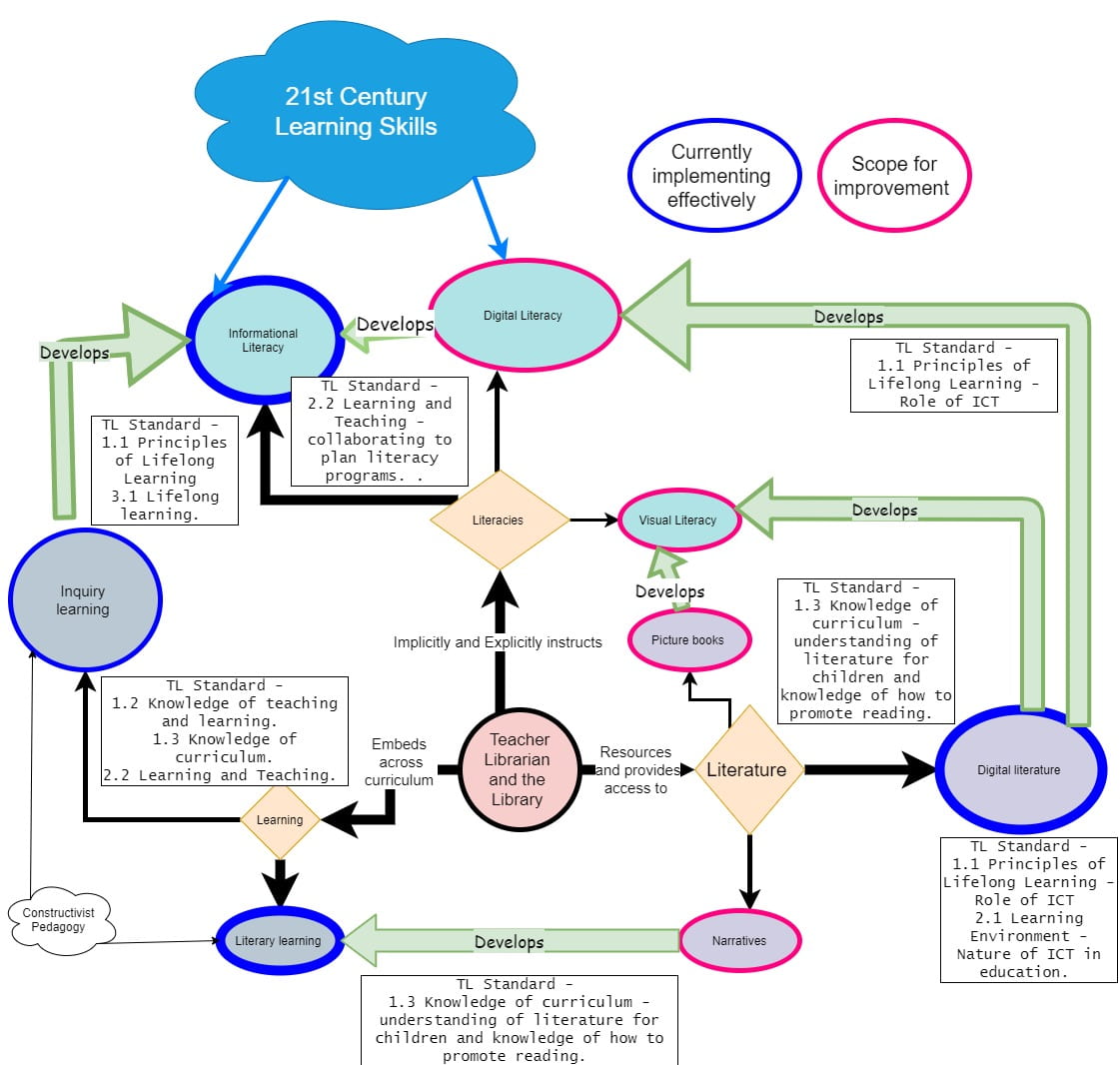Evaluation of Practice
The information revolution with its pervasive presence of personal devices and ubiquitous use of the internet has permanently changed the role teacher librarians (TL) and libraries hold in their communities. Libraries were seen as information repositories, with librarians curating the collection from unsuitable resources. However, the shift in paradigms has led to a surfeit of information, and the 21st century requires more than excellent curation skills from their informational professionals. Instead, they need access to reliable information, and the necessary skills to seek, find and use information for personal, professional and recreational purposes. This indicates that as the resident informational professional within a school, the TL is tasked with designing, embedding and implementing programs that promote the development of 21st century skills so that their students can successfully navigate life in the third millennium.
TLs have a complex role in a school. Prior to my Masters of Education (Teacher Librarianship), I was under the false impression TLs were ruled by Dewey and the best sellers book list. I was proved wrong. Over the past three years I have learned that whilst a TL is dually qualified as an educator and informational professional, their primary focus is student learning. This is because a qualified TL has the capacity to improve the learning outcomes for all school students through the effective use of good quality literature to teach literacies and learning. Resource based learning is the foundation of 21st century learning because it is student centred and focuses on how the individual constructs their own new knowledge on prior understanding. This is why constructivist pedagogies, such as inquiry learning and literary learning are intrinsic to a TLs practice because they both use curriculum based resources to develop essential 21st century skills.
A TL has the professional capacity to improve student learning outcomes and develop 21st century skills in their school community. However, their efficacy is based upon their ability to effectively collaborate with their peers to lead innovative pedagogical change horizontally across the curriculum. This is where the ASLA & ALIA (2004) TL standards prove their value because they are able to frame current and future practice. The concept map below is a visual representation of how I have organised my practice through the promotion of literature, literacies and learning. The map also highlights the TL standards that support my practice, as well as indicate the areas that future professional development is required, such as investigating strategies to increase the use of narratives and picture books in pedagogy. It also points out that in order to successfully implement an effective school wide digital literacy program that builds skills in targeted and incremental stages, I will need to collaborate and evaluate the program with school executives and other middle school leaders.
The role of a TL in a 21st century school is far more complex because society has changed the way it interacts with information. This information revolution has made information and digital literacy, as well as critical and creative thinking essential for success in the 21st century. Therefore, as information professionals, a TL is mandated to ensure that their practice is focused upon developing these skills and the standards offer a framework for that. Unfortunately there is no mention of patience in the TL standards as I will need plenty of that!!

Concept map of my practice and corresponding TL standards.
Australian School Library Association & Australian Library and Information Association. (2004). Australian professional standards for teacher librarians. ALIA. https://asla.org.au/resources/Documents/Website%20Documents/Policies/TLstandards.pdf